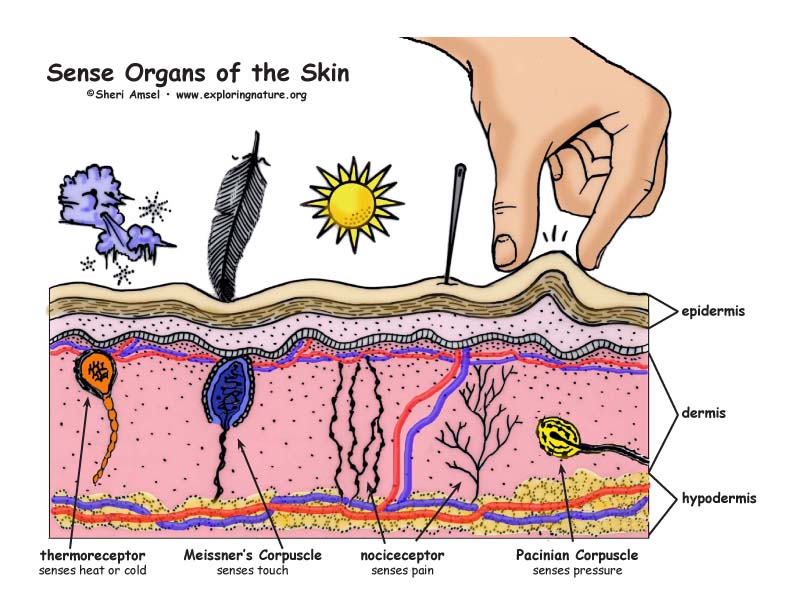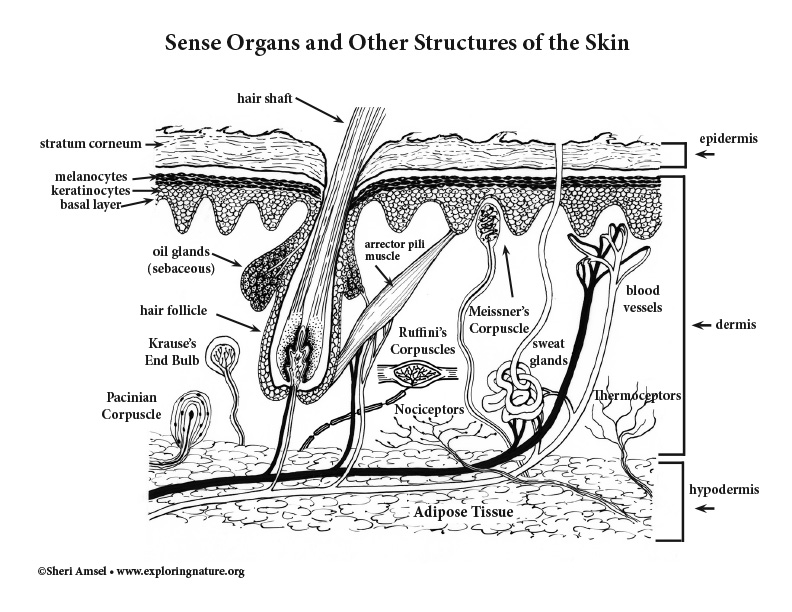

There are special sense receptors all over the body in the skin. These cutaneous sensory receptors are part of the nervous system – little nerve endings that pick up signals from the outside world: heat, cold, pressure and pain.
1. Meissner’s Corpuscles are egg-shaped receptors found just below the top layer of the skin (in the epidermis). They pick up light touch. These receptors help us identify objects by touch. Close your eyes and have someone place an object in your hands, feel it with your fingers until you know what it is. Those are your Meissner’s corpuscles at work!
2. Pacinian Corpuscles are deep in your skin (in the dermis) and feel deep pressure, like a painful squeeze.
3. Krause End Bulb are mechanoreceptors that pick up the sense of touch.
4. Nociceptors pick up pain. Thermoreceptors pick up heat and cold. They are free nerve endings that sit just below the top layer of the skin (in the epidermis).
5. Ruffini's Corpuscles are mechanoreceptors deep in the dermis that feel deep pressure and stretch.
Other structures in the skin include:
6. Blood Vessels - delivering oxygen and removing carbon dioxide from the skin cells.
7. Sweat Glands - excrete moisture that helps regulate body temperature.
8. Oil Glands (Sebaceous Glands) - excrete an oily, waxy sebum that helps waterproof and lubricate the skin.
9. Hair Follicles: hair shaft (5a) and arrector pili muscle (5b) that makes it stand on end (goose bumps).
The skin has three layers that include the:
10. Epidermis - outer layer of the skin made up of protective three layers.
11. Dermis - middle layer with blood vessels, hair follicles, sweat glands, nerve endings, and other cells.
12. Hypodermis - inner layer made up of fiber and fat cells to hold in body heat and absorb shocks.
Test Your Understanding of the Sense Organs of the Skin with:
Name Them with Fill in the Blank (Advanced)
Name Their Functions (Advanced)

